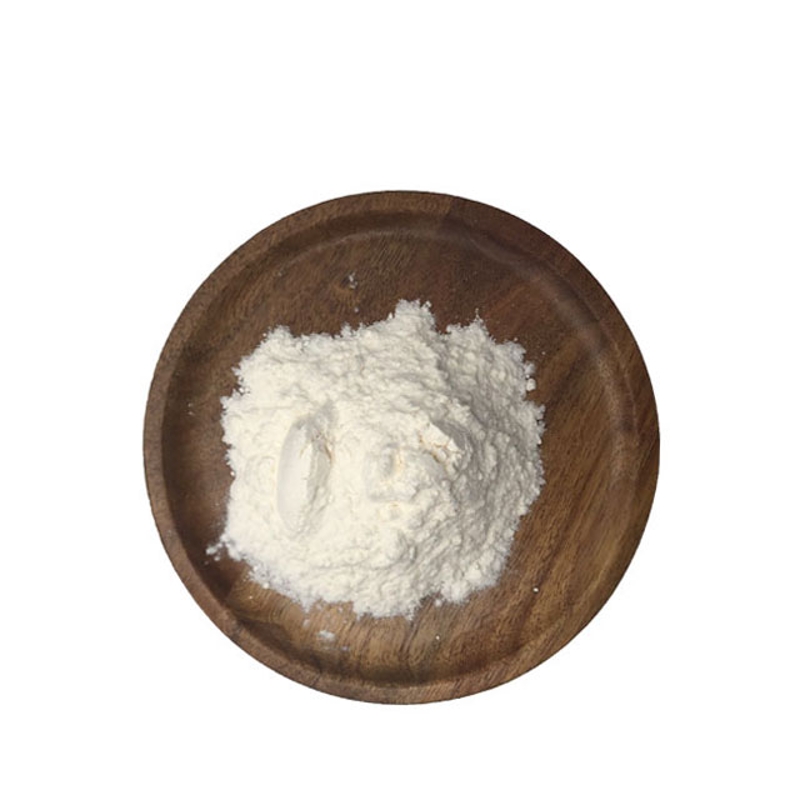Science Advances Dalian University of Technology Zhao Weijie/Li Guangzhe/Shao Kun uses ultrasound-driven immune-enhancing molecular machines for tumor treatment
-
Last Update: 2021-11-04
-
Source: Internet
-
Author: User
Search more information of high quality chemicals, good prices and reliable suppliers, visit
www.echemi.com
Editor’s note iNature is China’s largest academic official account.
It is jointly created by the doctoral team of Tsinghua University, Harvard University, Chinese Academy of Sciences and other units.
The iNature Talent Official Account is now launched, focusing on talent recruitment, academic progress, scientific research information, interested parties can Long press or scan the QR code below to follow us
.
iNature is still an urgent clinical need to explore simple and effective treatments for synergistic control of primary tumors and metastasis
.
Sonodynamic therapy (SDT) offers the possibility of non-invasive eradication of local solid tumors, but due to its limited ability to produce systemic anti-tumor effects, it lacks anti-metastatic activity
.
On October 20, 2021, Dalian University of Technology Zhao Weijie, Li Guangzhe and Shao Kun joint communication (Wang Liu is the first author) published a study titled "An ultrasound-driven immune-boosting molecular machine for systemic tumor suppression" in Science Advances online The thesis, the research uses a previously unknown ultrasound-driven "molecular machine", DYSP-C34 (abbreviated as C34), which has a variety of attractive features, including preferential tumor accumulation, effective ultrasound-triggered cytotoxicity, and intrinsic immune enhancement
.
Driven by ultrasound, C34 can be used not only as a tumor cell killing agent, but also as an immune enhancer, by directly stimulating dendritic cells to enhance strong adaptive anti-tumor immunity, thereby eradicating primary solid tumors and inhibiting metastasis
.
This molecular machine C34 is expected to achieve systemic treatment of cancer through single-molecule-mediated SDT
.
Cancer treatments are developing slowly, with very rare successes
.
Although conventional therapies such as radiotherapy, surgery and chemotherapy have improved the therapeutic effect of clear primary solid tumors, the efficacy is still not satisfactory, especially in patients with metastatic tumors, which actually account for more than 90% of cancers The patient's mortality rate
.
The reason may be that most therapies have low access to microscopic tumor lesions that occur in secondary organs
.
In this case, by initiating a dynamic anti-tumor immune response, immunotherapy has been shown to be most beneficial to the treatment of tumor cells
.
However, the stubborn tumor microenvironment hinders the effect of immunotherapy on solid tumors
.
As a representative non-invasive cancer treatment method, sonodynamic therapy (SDT) adapted from photodynamic therapy (PDT) has recently attracted widespread attention in cancer treatment, mainly because of its deep tissue penetration Great advantage
.
SDT uses a synergistic interaction between low-intensity ultrasound (US) and sonosensitizers to induce cytotoxicity
.
At present, the most accepted mechanism shows that US-activated sonosensitizers cause molecular oxygen to be converted into various high reactive oxygen species (ROS), thereby inducing tumor cell apoptosis and necrosis
.
It is worth noting that more and more evidences show that the SDT process can be initiated by inducing immunogenic cell death (ICD) of dying cancer cells, but in a very limited way the host anti-tumor immunity is characterized by the release of "dangerous "Signal so that antigen presenting cells (APC) can trigger a "vaccine-like" immune response
.
Unfortunately, the degree of immune response caused by SDT is not enough to effectively control tumor growth and metastasis
.
In order to take advantage of the effectiveness of systemic anti-tumor immunity, the development of sonar/immune combination therapy has been used as an attractive strategy to amplify the overall therapeutic effect, mainly through the co-delivery of sonosensitizers and adjuvants or checkpoints through nanocarriers The effectiveness of inhibitors in mouse models has been verified in many studies
.
Although the importance of nanomedicine is constantly being emphasized, the biodegradability and biosafety of these complex nanosystems have always been the main issues for their further clinical transformation
.
Natural products are a continuous source of clues for many biologically active molecules and are expected to be developed into new drugs
.
Chlorin e6 (Ce6) is isolated from the excrement of green plants or silkworms.
It is a second-generation sensitizer with strong sound sensitivity
.
A number of studies have shown that Ce6-mediated SDT can inhibit the proliferation of liver cancer cells, breast cancer cells, and human lung adenocarcinoma cells, but its low bioavailability, poor solubility, and tendency to aggregate in biological media hinder the in vivo application of Ce6
.
Many new chlorin-based sensitizers have been widely developed due to their structural flexibility and direct chemical modification
.
A chlorophyll derivative with the same chemical structure as Ce6 was successfully prepared from natural spirulina powder originating in Chenghai Lake, Yunnan Province, China, named Chenghai Chlorin (CHC)
.
Here, the research designed a "molecular machine" called DYSP-C34 (abbreviated as C34) by introducing 32-aryl and 15-aspartyl substituents into CHC
.
The results of this study show that this strategic chemical modification successfully endowed the resulting molecule C34 with a variety of beneficial properties, such as improved lipophilicity/hydrophilicity balance, enhanced US-induced ROS production capacity and better cell permeability, resulting in excellent High tumor targeting efficiency and significant SDT-mediated tumor regression
.
Unexpectedly, C34 itself showed slight immunogenicity by directly stimulating APC
.
C34-mediated SDT-induced sonic/immune synergistic effect can significantly cause tumors to regress systematically
.
Reference message: https://
This article is an English version of an article which is originally in the Chinese language on echemi.com and is provided for information purposes only.
This website makes no representation or warranty of any kind, either expressed or implied, as to the accuracy, completeness ownership or reliability of
the article or any translations thereof. If you have any concerns or complaints relating to the article, please send an email, providing a detailed
description of the concern or complaint, to
service@echemi.com. A staff member will contact you within 5 working days. Once verified, infringing content
will be removed immediately.







